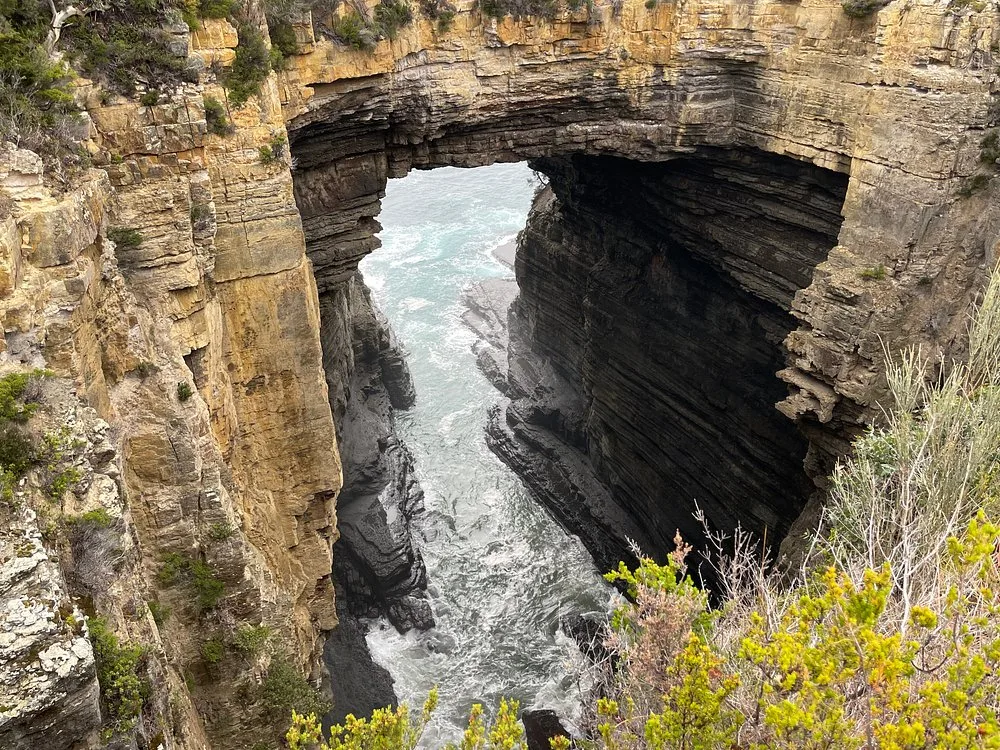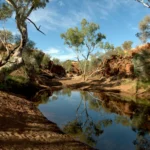Now Reading: Discover Tasmania: Your Ultimate Guide to the Island State
-
01
Discover Tasmania: Your Ultimate Guide to the Island State
Discover Tasmania: Your Ultimate Guide to the Island State

Tasmania, an Australian island state, truly captivates visitors. Many call it the “Apple Isle” due to its rich agricultural heritage. This remarkable land offers a unique blend of pristine wilderness, vibrant history, and a growing culinary scene. Its rugged, ancient landscapes were shaped by glaciers and time. Charming colonial towns and a bustling capital city also await. Tasmania provides a travel experience unlike any other. You can hike through World Heritage-listed national parks in the morning. Later, indulge in world-class gourmet food and wine.
The island’s isolation has fostered a distinct character. This preserves its natural beauty and allows unique wildlife to thrive. This comprehensive guide explores the best of Tasmania. We will discover its breathtaking natural wonders. We will also delve into its rich history and culture. Savor its culinary delights. Finally, encounter its fascinating native animals. Prepare to be enchanted by this extraordinary island at the edge of the world.
Exploring Tasmania’s Breathtaking Natural Wonders
Tasmania, an Australian island state, is a true haven for nature lovers. It boasts an unparalleled collection of pristine wilderness, dramatic coastlines, and unique ecosystems. The island offers diverse natural attractions, from ancient rainforests to rugged mountains and serene lakes. These captivate every visitor. Tasmania clearly commits to preserving its natural heritage. A significant portion of the island is protected within national parks and UNESCO World Heritage Areas. This ensures these breathtaking landscapes remain unspoiled for future generations. Therefore, Tasmania is a prime destination for eco-tourism and outdoor adventures. It invites exploration of its untouched beauty.
The island’s relatively small size hides an immense variety of natural environments. Travelers can experience vastly different landscapes within a short distance. These range from the alpine grandeur of its central highlands to the stunning coastal vistas of its eastern and southern shores. This rich tapestry of natural wonders forms a cornerstone of Tasmania’s appeal. It draws visitors globally, eager to immerse themselves in its wild and beautiful heart.
Cradle Mountain-Lake St Clair National Park

At the heart of Tasmania’s wilderness lies the iconic Cradle Mountain-Lake St Clair National Park. This jewel in the crown of the Tasmanian Wilderness World Heritage Area is dominated by the jagged peaks of Cradle Mountain and the serene waters of Dove Lake. The park is a paradise for hikers and nature enthusiasts. It offers a range of walking tracks. For example, the easy Dove Lake Circuit provides stunning reflections of Cradle Mountain. The challenging Overland Track is a multi-day trek. It winds through diverse landscapes of ancient rainforests, alpine moorlands, and glacial lakes. The air here is crisp and clean. Often, the silence is broken only by the calls of native birds or rustling leaves. Visitors can encounter unique Tasmanian wildlife. This includes wombats, wallabies, and echidnas.
They are often seen grazing peacefully near the trails. The ever-changing weather adds to the park’s dramatic beauty. Mists often swirl around the mountain peaks, creating an ethereal atmosphere. The park’s diverse ecosystems support rich biodiversity. This makes it a significant area for scientific research and conservation. Interpretation centers provide valuable insights into the park’s geology, flora, and fauna. This enhances the visitor experience. The sheer grandeur and tranquility of Cradle Mountain-Lake St Clair make it an essential stop for anyone exploring Tasmania’s natural wonders.
Freycinet National Park & Wineglass Bay

On Tasmania’s stunning east coast, Freycinet National Park beckons. It features striking pink granite mountains, secluded coves, and the world-renowned Wineglass Bay. This picturesque bay, with its perfect crescent of white sand and turquoise waters, consistently ranks among the world’s most beautiful beaches. A relatively short but steep hike leads to a lookout. It offers panoramic views of Wineglass Bay, a sight that truly captures the essence of Tasmania’s coastal beauty. Beyond Wineglass Bay, the park offers numerous exploration opportunities. These include walking trails to Hazards Beach, Honeymoon Bay, and the dramatic Cape Tourville Lighthouse. The vibrant colors of the granite, especially at sunrise and sunset, create a breathtaking spectacle. This contrasts beautifully with the clear blue ocean.
Activities like sea kayaking, snorkeling, and birdwatching are popular. They allow visitors to experience the park’s marine and avian life up close. The park’s diverse habitats support various wildlife. This includes wallabies, possums, and a rich array of bird species. Freycinet National Park demonstrates Tasmania’s commitment to preserving its natural coastal environments. It offers a blend of adventure and serene beauty that is truly unforgettable. The contrast between rugged mountains and tranquil bays provides unique visual appeal. This makes it a photographer’s dream and a perfect destination for relaxation and outdoor activity.
Tasman National Park & Dramatic Coastlines

Venturing further south on Tasmania’s east coast, Tasman National Park showcases spectacular and rugged coastal scenery. This park features towering sea cliffs, dramatic rock formations, and a coastline sculpted by the Southern Ocean’s relentless power. Iconic natural formations are easily accessible. These include Tasman Arch, Devil’s Kitchen, and the Blowhole. They offer awe-inspiring views of nature’s raw power. The park also houses the historic Port Arthur Historic Site. This former penal settlement provides a poignant glimpse into Tasmania’s convict past. It is set against a backdrop of stunning natural beauty.
For the adventurous, the Three Capes Track offers a multi-day walking experience. It follows the clifftops, providing unparalleled views of the Tasman Peninsula’s dramatic coastline. The waters surrounding the park teem with marine life. Visitors may spot seals, dolphins, and even whales during migration seasons. The sheer scale of the cliffs and the ocean’s intensity create a powerful and humbling experience. Tasman National Park intertwines history and nature. It offers a profound connection to the past and an exhilarating encounter with the wild beauty of Tasmania’s southern shores. Its unique geological features and rich maritime history make this park a compelling destination. It appeals to those interested in natural wonders and historical narratives.
Other Natural Highlights
Beyond these prominent national parks, Tasmania boasts many other natural highlights. These contribute to its reputation as a pristine wilderness destination. The Bay of Fires, on the northeastern coast, is famous for its dazzling white sands, crystal-clear turquoise waters, and granite boulders. These boulders are adorned with vibrant orange lichen. This stunning coastline offers opportunities for swimming, snorkeling, and relaxing amidst breathtaking scenery. Further inland, the majestic Mount Wellington overlooks Hobart, the capital city. It provides panoramic views of the city, the Derwent River, and beyond. Accessible by a scenic drive, the summit offers a stark, alpine landscape. This contrasts sharply with the urban sprawl below. Diverse vegetation zones are encountered on the ascent. They range from temperate rainforest to sub-alpine forests. This highlights Tasmania’s ecological variety. The island also features countless waterfalls, serene lakes, and ancient forests.
Many are easily accessible and offer tranquil retreats. Examples include Russell Falls in Mount Field National Park, the serene Lake St. Clair (Australia’s deepest lake), and the ancient Huon Pine forests. These stand as living relics of a bygone era. Each natural attraction, whether grand or subtle, enriches Tasmania’s natural heritage. They invite exploration and appreciation of its unique and unspoiled beauty. The accessibility of these diverse natural environments, often within a short drive of major towns, makes Tasmania an ideal destination. It suits those seeking to connect with nature without venturing too far off the beaten path.
Historic Towns and Cultural Gems
Beyond its unparalleled natural beauty, Tasmania is a treasure trove of history and culture. Charming towns and vibrant cities tell tales of its rich past. Colonial architecture dots its landscapes. Thriving arts scenes and culinary delights abound. The island offers a captivating blend of old-world charm and contemporary vibrancy. Well-preserved heritage buildings and historical sites provide a tangible link to Tasmania’s convict and pioneering eras. They offer visitors a unique opportunity to step back in time. Yet, these historic settings are far from stagnant. They are alive with modern cafes, galleries, and boutiques. This creates a dynamic atmosphere where history and contemporary life seamlessly intertwine. Tasmania’s cultural fabric is also deeply influenced by its indigenous heritage.
This adds another layer of depth and significance to its identity. Exploring these towns and cities reveals the resilience, creativity, and unique character of the Tasmanian people. This makes the cultural journey as enriching as the natural one. This section delves into some of Tasmania’s most significant urban and historical centers. It showcases their distinct personalities and myriad experiences.
Hobart: A Vibrant Capital

Hobart, Tasmania’s capital city, is a captivating blend of historic charm and contemporary cool. It nestles at the foot of Mount Wellington and overlooks the picturesque Derwent River. Its waterfront, especially around Salamanca Place, is a hub of activity. On Saturdays, the famous Salamanca Market comes alive with local produce, arts, and crafts. The Georgian warehouses of Salamanca, once vital to Hobart’s maritime trade, now house art galleries, restaurants, and shops. They exude a unique character. Adjacent to Salamanca is Battery Point, a historic village. It features narrow lanes, colonial cottages, and charming gardens. This offers a delightful glimpse into Hobart’s past. For art enthusiasts, the Museum of Old and New Art (MONA) is a must-visit. This privately funded museum, accessible by ferry from Hobart, is renowned for its provocative and eclectic collection.
It pushes the boundaries of traditional art spaces. Hobart’s culinary scene is equally impressive. It boasts an abundance of fresh seafood, local produce, and award-winning restaurants and cafes. The city serves as an excellent base for exploring nearby attractions. These include the summit of Mount Wellington, offering panoramic views, and the historic Port Arthur. Hobart’s vibrant atmosphere, coupled with its rich history and stunning natural surroundings, makes it a compelling destination for any visitor to Tasmania.
Launceston: Gateway to the North
Launceston, Tasmania’s second-largest city, is a charming northern hub. It is known for its elegant Victorian architecture, beautiful parks, and proximity to the Tamar Valley wine region. The city’s most striking natural attraction is Cataract Gorge. This unique natural formation is just a short walk from the city center. Here, the South Esk River carves a dramatic chasm through ancient rocks. This creates a stunning landscape with walking trails, a chairlift, and a swimming pool. The Queen Victoria Museum and Art Gallery (QVMAG), with its two distinct sites, offers comprehensive insight. It covers Tasmania’s natural history, colonial past, and contemporary art scene. Launceston also serves as the gateway to the Tamar Valley. This is one of Australia’s premier cool-climate wine regions. A scenic drive through the valley reveals numerous vineyards.
They offer cellar door tastings of exquisite Pinot Noir, Chardonnay, and sparkling wines. The city’s culinary offerings are diverse. They range from fine dining to casual cafes, all emphasizing fresh, local ingredients. Launceston’s relaxed pace, combined with its cultural attractions and access to natural beauty, makes it an ideal starting point. It is perfect for exploring northern Tasmania and beyond. The blend of urban sophistication and natural wonder defines Launceston’s appeal. It invites visitors to discover its many facets.
Charming Historic Villages
Tasmania is dotted with numerous smaller historic villages. Each possesses a unique character and a story to tell. These well-preserved settlements offer a delightful journey back in time. They showcase the island’s rich colonial heritage and rural charm.
Richmond
Just a short drive from Hobart, Richmond is arguably one of Tasmania’s most picturesque historic towns. Its centerpiece is the Richmond Bridge. Convict labor built it in 1825. This makes it Australia’s oldest stone bridge still in use. The town’s main street features beautifully preserved Georgian buildings. They house quaint shops, cafes, and galleries. Visitors can explore the Richmond Gaol, another significant convict-era structure. It offers a stark insight into early colonial life. The Old Hobart Town model village provides a fascinating miniature replica of Hobart in the 1820s. Richmond’s timeless appeal and proximity to the capital make it a popular day-trip destination. It offers a serene escape into Tasmania’s past.
Stanley
Stanley, a charming fishing village, sits on Tasmania’s rugged northwest coast. It is dominated by The Nut, an ancient volcanic plug. This rises dramatically from the sea. Visitors can walk or take a chairlift to the summit. This provides panoramic views of the town and coastline. Stanley itself is a delightful collection of heritage cottages. Many have been converted into guesthouses, cafes, and artisan shops. The town’s rich maritime history is evident. It shows in its well-preserved buildings and working fishing boats in its harbor. The Joe Lyons Cottage, birthplace of Australia’s 10th Prime Minister, offers a glimpse into a prominent Australian figure’s life. Stanley’s remote location and stunning natural backdrop make it a tranquil and visually striking destination.
Deloraine
Deloraine, a vibrant rural town, nestles on the banks of the Meander River in Tasmania’s central north. It is celebrated for its arts and crafts scene. The town’s main street offers a charming mix of historic buildings. They house art galleries, antique shops, and cafes. Deloraine is particularly known for its annual Tasmanian Craft Fair. This draws artists and visitors from across the country. The Yarns Artwork in Silk exhibition is a unique cultural attraction. It features large textile panels depicting Tasmanian history and nature. A picturesque riverside walk offers views of sculptures and murals. This reflects the town’s artistic spirit. Deloraine’s blend of natural beauty, artistic flair, and community spirit makes it a delightful stop. It is perfect for those exploring the heart of Tasmania.
Evandale
South of Launceston, Evandale is a perfectly preserved Georgian village. It feels like a step back in time. Its tree-lined streets are adorned with beautifully restored 19th-century buildings. These include churches, cottages, and public houses. Evandale is famous for its Sunday market. It offers local produce, crafts, and antiques. The National Penny Farthing Championship is also held here annually. This unique event draws enthusiasts from around the world. Evandale’s commitment to preserving its heritage is evident in every corner. This makes it a charming and authentic historical experience. The village provides a peaceful retreat and a strong sense of community. It is a true gem in Tasmania’s historical landscape.
Culinary Delights and Local Produce
Tasmania’s isolation and pristine environment contribute to its reputation as a foodie paradise. The island boasts an abundance of fresh, high-quality produce. This ranges from succulent seafood to award-winning wines and artisanal cheeses. The cool climate and fertile soils create ideal conditions for diverse agriculture. This results in exceptional flavors. Tasmania’s culinary scene emphasizes farm-to-table and sea-to-plate dining. This ensures freshness and supports local producers. Visitors can explore farmers’ markets, cellar doors, and gourmet restaurants. Each offers a unique taste of the island. This section highlights some of Tasmania’s most celebrated culinary experiences. It also showcases its renowned local produce.
Seafood Extravaganza
Given its island status, Tasmania excels in seafood. Its cold, clean waters yield an impressive array of marine delicacies. Fresh oysters, abalone, rock lobster, and Atlantic salmon are particularly renowned. Visitors can enjoy these straight from the source. Many coastal towns offer fresh seafood markets and fish punts. Here, you can buy directly from fishermen. Hobart’s Constitution Dock is famous for its floating fish punts. They serve fresh fish and chips. Seafood festivals celebrate the ocean’s bounty throughout the year. These events offer opportunities to sample diverse dishes. They also highlight local producers. Tasmania’s commitment to sustainable fishing practices ensures the longevity of its marine resources. This allows future generations to enjoy its exceptional seafood. A seafood feast is an essential part of any Tasmanian culinary journey.
Award-Winning Wines and Craft Beverages
Tasmania’s cool climate makes it ideal for viticulture. It produces world-class wines, especially Pinot Noir, Chardonnay, and sparkling wines. The Tamar Valley, Coal River Valley, and Pipers River regions are particularly notable. They feature numerous vineyards and cellar doors. Visitors can enjoy tastings and learn about the winemaking process. Many wineries offer stunning views and gourmet dining experiences. Beyond wine, Tasmania’s craft beverage scene thrives. Artisan breweries produce unique beers. Distilleries create award-winning whiskies and gins. Cider houses use local apples to craft refreshing ciders. These beverages reflect the island’s pure ingredients and innovative spirit. Exploring Tasmania’s beverage trails offers a delightful journey for the palate.
Farm-to-Table Experiences and Local Markets
Tasmania’s fertile land yields an abundance of fresh produce. This includes berries, apples, cherries, and various vegetables. Local farmers’ markets are vibrant hubs. They offer direct access to these seasonal delights. Salamanca Market in Hobart is a prime example. It showcases a wide range of local produce, artisanal foods, and crafts. Many restaurants on the island embrace the farm-to-table philosophy. They source ingredients directly from local farms. This ensures freshness and supports the community. Visitors can also experience farm tours and cooking classes. These provide deeper insights into Tasmania’s agricultural heritage. The island’s rich dairy industry produces exceptional cheeses, creams, and ice creams. Artisan bakeries and chocolatiers further enhance the gourmet experience. Tasmania’s commitment to local, fresh ingredients makes every meal a memorable one.
Unique Wildlife Encounters
Tasmania’s isolation has created a unique environment. It supports a diverse array of endemic wildlife. Many species found here exist nowhere else on Earth. This makes the island a crucial biodiversity hotspot. Wildlife conservation is a high priority. Various national parks and wildlife sanctuaries protect these precious animals. Visitors have incredible opportunities to observe these creatures in their natural habitats. This section explores some of Tasmania’s most iconic and fascinating wildlife. It also suggests the best places for encounters.
The Tasmanian Devil
The Tasmanian Devil is perhaps Tasmania’s most iconic animal. This carnivorous marsupial is known for its fierce growl, powerful bite, and nocturnal habits. Once widespread, their population faced a severe decline due to Devil Facial Tumour Disease (DFTD). However, dedicated conservation efforts are now underway. These aim to protect and restore their numbers. Visitors can observe Tasmanian Devils at various wildlife parks and sanctuaries. These include Bonorong Wildlife Sanctuary and Tasmania Zoo. These centers play a vital role in breeding programs and research. They also educate the public about conservation challenges. Seeing a Tasmanian Devil up close is a truly unique and memorable experience. It offers a glimpse into Tasmania’s wild heart.
Wombats, Wallabies, and Kangaroos
Tasmania is home to several species of marsupials. Wombats, wallabies, and kangaroos are commonly seen. Wombats are stout, burrowing animals. They are often spotted grazing in open areas, especially at dusk and dawn. Cradle Mountain-Lake St Clair National Park is an excellent place to see them. Wallabies, smaller relatives of kangaroos, are abundant across the island. They inhabit various environments, from forests to open grasslands. Bennett’s wallabies are particularly common. Kangaroos, though less prevalent than on mainland Australia, can still be found. Forester kangaroos are the largest marsupials in Tasmania. They reside in the northeastern parts of the island. Wildlife parks and national parks offer prime viewing opportunities. Observing these native marsupials in their natural settings is a highlight for many visitors. It connects them with Tasmania’s unique ecosystem.
Birdlife and Marine Animals
Tasmania’s diverse habitats support a rich variety of birdlife. Many endemic species thrive here. The Forty-spotted Pardalote and the Tasmanian Native Hen are notable examples. Birdwatchers will find numerous opportunities across the island. Coastal areas and wetlands are particularly rewarding. Shearwaters, gulls, and various seabirds frequent the coastlines. Beyond birds, Tasmania’s marine environments teem with life. Seals, dolphins, and various whale species visit its waters. Bruny Island, off the southeast coast, is a prime location for marine wildlife cruises. Here, you can observe fur seals, albatrosses, and migrating whales. The clean, cold waters also support vibrant kelp forests. These provide habitats for diverse fish and invertebrate species. Snorkeling and diving offer opportunities to explore this underwater world. Tasmania’s commitment to marine conservation ensures these ecosystems remain healthy. This provides incredible opportunities for wildlife enthusiasts.
Planning Your Tasmanian Adventure
Planning a trip to Tasmania involves considering various factors. These include the best time to visit, transportation, and accommodation. The island offers diverse experiences. Therefore, careful planning ensures a memorable and enjoyable journey. This section provides practical tips and essential information. It helps you make the most of your Tasmanian adventure.
Best Time to Visit
Tasmania experiences four distinct seasons. Each offers unique attractions. Summer (December to February) is popular. It features warm weather and long daylight hours. This is ideal for hiking and outdoor activities. However, it is also peak tourist season. Autumn (March to May) brings mild weather and stunning fall foliage. This is perfect for scenic drives and wine tasting. Winter (June to August) is cold but beautiful. Snow often covers the highlands. This creates a dramatic landscape. It is ideal for cozy retreats and winter festivals. Spring (September to November) sees wildflowers blooming. The weather becomes milder. This is excellent for exploring national parks and gardens. Consider your preferred activities when choosing the best time to visit. Tasmania offers something special year-round.
Getting Around Tasmania
Exploring Tasmania typically requires a car. This provides the most flexibility. Major car rental companies operate at Hobart and Launceston airports. Roads are generally well-maintained. However, some remote areas may have gravel roads. Always check road conditions, especially in winter. Public transport is limited outside major cities. Coach services connect key towns. However, they offer less flexibility for exploring natural attractions. Domestic flights connect Hobart and Launceston to mainland Australian cities. Spirit of Tasmania is a popular ferry service. It connects Melbourne to Devonport. This allows visitors to bring their own vehicles. Consider a combination of driving and organized tours. This can enhance your travel experience. Tasmania’s compact size makes it easy to navigate. You can cover significant ground in a relatively short time.
Accommodation Options
Tasmania offers a wide range of accommodation. Options suit every budget and preference. In cities like Hobart and Launceston, you’ll find hotels, apartments, and boutique guesthouses. Historic cottages and charming B&Bs are popular in smaller towns. For nature lovers, national parks offer cabins, campsites, and eco-lodges. Unique stays include glamping sites and wilderness retreats. These provide immersive experiences in stunning natural settings. Booking in advance is advisable, especially during peak season. This ensures availability and often secures better rates. Consider your itinerary when choosing accommodation. Staying in different regions allows you to minimize travel time. It also maximizes exploration. Tasmania’s diverse lodging options cater to all types of travelers. They ensure a comfortable and memorable stay.
Conclusion
Tasmania is truly a destination of unparalleled beauty and diverse experiences. From its ancient, rugged wilderness to its charming historic towns, vibrant culinary scene, and unique wildlife, the island offers something for every traveler. We have explored its breathtaking natural wonders, delved into its rich history and culture, savored its culinary delights, and encountered its fascinating native animals. This guide provides a comprehensive overview. It aims to inspire and assist you in planning your adventure. Tasmania’s commitment to conservation ensures its pristine landscapes remain for future generations. Its friendly locals and relaxed pace of life add to its charm. Whether you seek thrilling outdoor adventures, cultural immersion, gourmet indulgence, or peaceful retreats, Tasmania delivers. Start planning your journey today. Discover the magic of this extraordinary island. Your unforgettable Tasmanian adventure awaits. It promises memories that will last a lifetime.
























